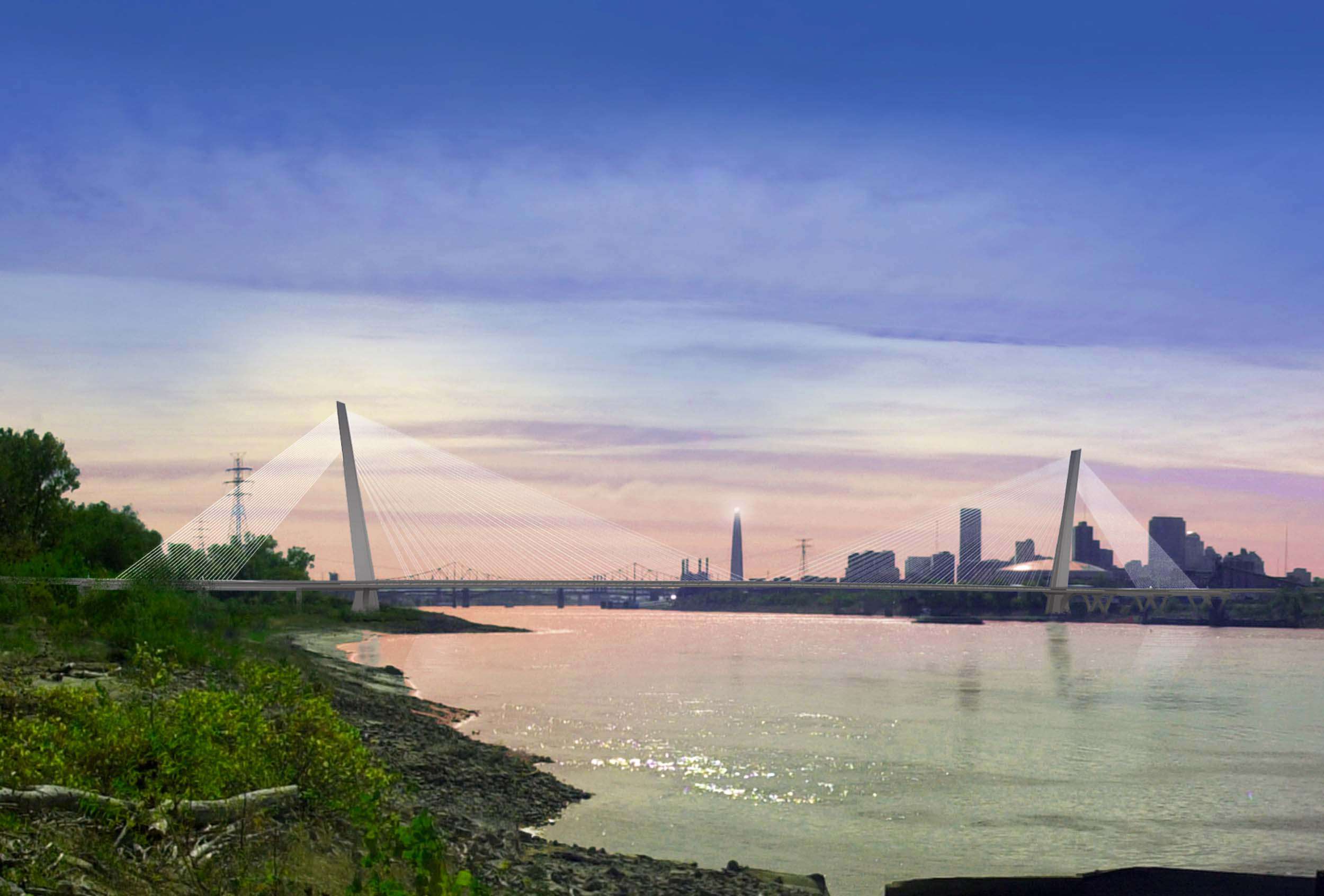I-70 Mississippi River Bridge
St. Louis, MO and East Saint Louis, IL
- Bridge use: Vehicular
- Bridge type: Cable-stayed
- Bridge location: Midwest
- Bridge use: Vehicular
- Bridge type: Cable-stayed
- Bridge location: Midwest

Community participation
Concept and preliminary design
The I-70 crossing in St. Louis will be one of the longest cable-stayed bridges along the Mississippi River. The bridge includes twelve lanes of traffic and is the widest of its kind in the world. The main span is supported by three planes of cables fanned along the edges and the median. An open truss system along the median allows sunlight to reach the water and makes the bridge appear lighter when seen from below. Over land, two planes of cables in the median balance the loads of the main span. Twin towers on the riverbanks, each as tall as a fifty-story building, clearly mark the point of crossing. Shaped to reflect stresses and cable locations, the towers lean away from the river at nine-degree angles in visual response to the effort of supporting the bridge. From a distance, they appear as open arms welcoming visitors and connecting Missouri and Illinois. With its grand scale, unique aesthetic attributes, and dynamic appearance, the I-70 Mississippi River crossing joins the Gateway Arch as an important symbol of the St. Louis region.
- Client: Illinois DOT, IL
- Services: Aesthetic lighting design, Community participation, Concept and preliminary design
The I-70 crossing in St. Louis will be one of the longest cable-stayed bridges along the Mississippi River. The bridge includes twelve lanes of traffic and is the widest of its kind in the world. The main span is supported by three planes of cables fanned along the edges and the median. An open truss system along the median allows sunlight to reach the water and makes the bridge appear lighter when seen from below. Over land, two planes of cables in the median balance the loads of the main span. Twin towers on the riverbanks, each as tall as a fifty-story building, clearly mark the point of crossing. Shaped to reflect stresses and cable locations, the towers lean away from the river at nine-degree angles in visual response to the effort of supporting the bridge. From a distance, they appear as open arms welcoming visitors and connecting Missouri and Illinois. With its grand scale, unique aesthetic attributes, and dynamic appearance, the I-70 Mississippi River crossing joins the Gateway Arch as an important symbol of the St. Louis region.